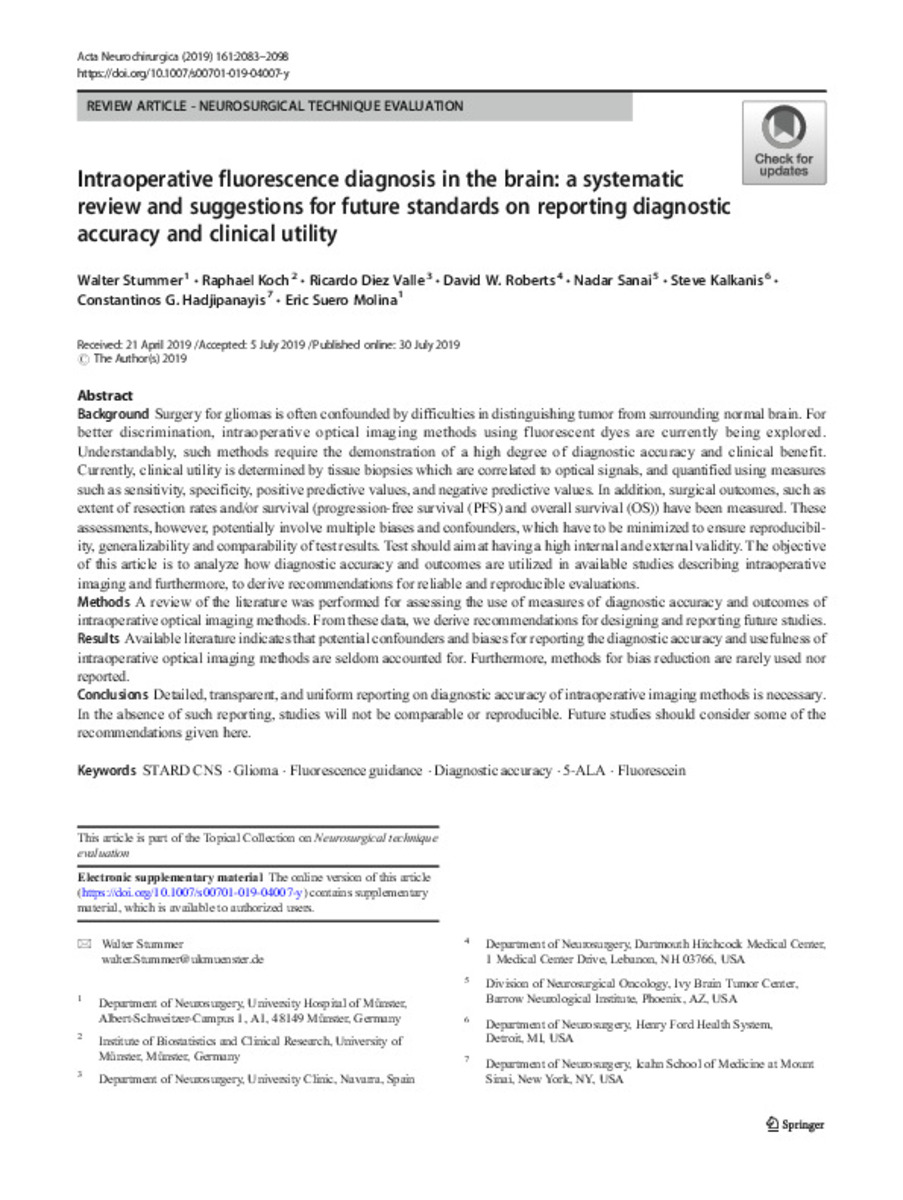Intraoperative fluorescence diagnosis in the brain: a systematic review and suggestions for future standards on reporting diagnostic accuracy and clinical utility
Palabras clave :
STARD CNS
Glioma
Fluorescence guidance
Diagnostic accuracy
5-ALA
Fluorescein
Fecha de publicación :
2019
Editorial :
Springer Science and Business Media LLC
Nota:
Open Access This article is distributed under the terms of the Creative Commons Attribution 4.0 International License
Cita:
Stummer, W. (Walter); Koch, R. (Raphael); Diez-Valle, R. (Ricardo); et al. "Intraoperative fluorescence diagnosis in the brain: a systematic review and suggestions for future standards on reporting diagnostic accuracy and clinical utility". Acta Neurochirurgica. 161, 2019, 2083 - 2098
Aparece en las colecciones:
Estadísticas e impacto
0 citas en

Los ítems de Dadun están protegidos por copyright, con todos los derechos reservados, a menos que se indique lo contrario.







